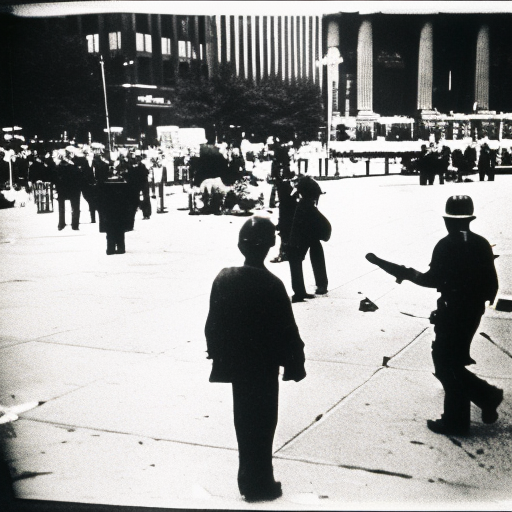Summary:
Occupy Wall Street was a protest movement that began in September 2011 in New York City’s financial district. It aimed to draw attention to economic inequality, corporate greed, and the influence of money in politics. The movement quickly spread to other cities in the United States and around the world, sparking a global conversation about wealth disparity and social justice.
Background:
The Occupy Wall Street movement emerged in the wake of the 2008 financial crisis, which resulted in widespread job losses, home foreclosures, and a growing sense of economic insecurity. Many people felt that the government and financial institutions had prioritized the interests of the wealthy over those of ordinary citizens. Inspired by protests in Egypt and Spain, activists in New York City decided to occupy Zuccotti Park near Wall Street to voice their grievances.
The Protest:
The protesters, who called themselves the “99 percent,” argued that the top 1 percent of the population held a disproportionate amount of wealth and power. They criticized corporate influence in politics, the lack of accountability for financial institutions, and the growing income inequality in the country. The movement attracted a diverse range of participants, including students, workers, and activists from various backgrounds.
Tactics and Organization:
The protesters used a variety of tactics to draw attention to their cause. They set up a camp in Zuccotti Park, creating a visible presence in the heart of the financial district. They held general assemblies to make decisions collectively and used social media platforms to spread their message and coordinate actions. The movement also organized marches, rallies, and teach-ins to engage with the public and raise awareness about their concerns.
Impact and Legacy:
Occupy Wall Street had a significant impact on public discourse and activism. It brought issues of economic inequality and corporate power to the forefront of political discussions. The movement also influenced the language and rhetoric used by politicians and policymakers, with phrases like “the 1 percent” and “income inequality” becoming common in public discourse. Although the movement did not achieve all of its goals, it succeeded in sparking a broader conversation about economic justice and inspiring other social justice movements around the world.
Criticism and Challenges:
Occupy Wall Street faced criticism for its lack of a clear agenda and leadership structure. Some argued that the movement’s decentralized nature made it difficult to sustain momentum and achieve concrete results. Others criticized the protesters for their tactics, such as blocking traffic and engaging in confrontations with the police. Additionally, the movement faced challenges from law enforcement, with many protesters being arrested and forcibly removed from their encampments.
Conclusion:
Occupy Wall Street was a protest movement that emerged in response to economic inequality and corporate influence in politics. It brought attention to these issues through its occupation of Zuccotti Park and its use of social media and public demonstrations. While the movement faced criticism and challenges, it had a lasting impact on public discourse and inspired a global conversation about wealth disparity and social justice.












